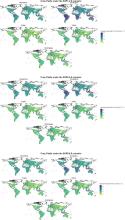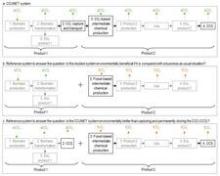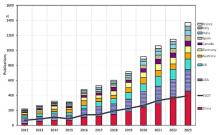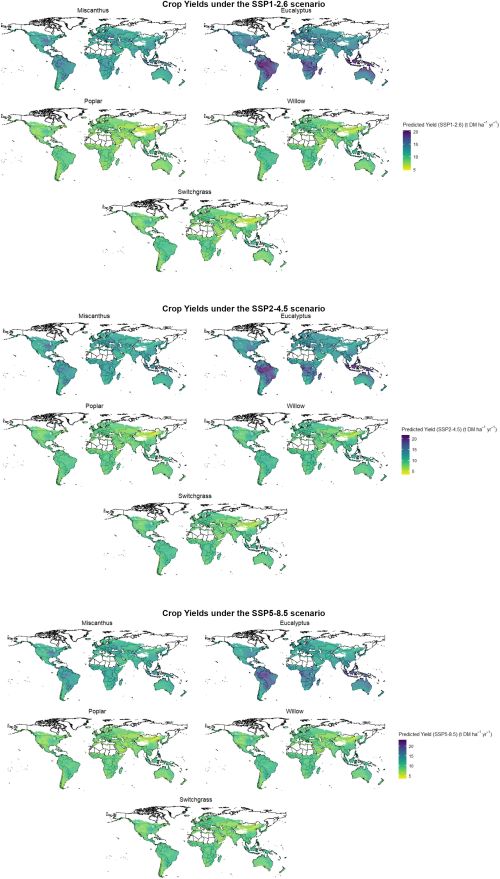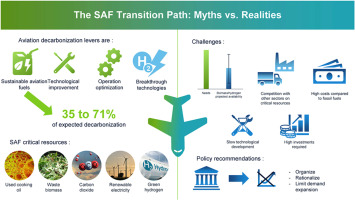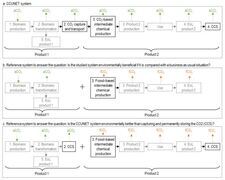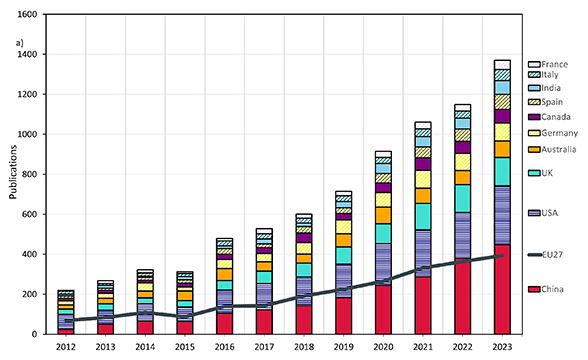Lignocellulosic crops such as Miscanthus, Eucalyptus, Poplar, Willow, and Switchgrass are gaining attention as promising feedstocks for renewable energy and carbon-mitigation strategies, especially on marginal lands. Assessing their global yield potentials requires models that go beyond climate drivers alone. Using a global dataset of 3963 yield observations for five species, we developed a high-resolution (5-arc-minute) modeling framework that augments climate with detailed soil and topographic predictors. Among seven machine learning algorithms, Random Forest, Extra Trees, and Gradient Boosting (GB) emerged as top performers. On an independent test set, the best model achieved a root mean square error (RMSE) of 4.8 t DM ha−1 year−1 (across algorithms: 4.7–5.0 t DM ha−1 year−1) and an R2 of 0.67, a moderate error relative to the broad 4–19 t DM ha−1 year−1 spatial yield range. After outlier handling via a two-phase cross-validation procedure, each model was applied globally under current climate and three future scenarios (SSP1-2.6, SSP2-4.5, and SSP5-8.5). Across scenarios (relative to the 1980–2000 baseline), median absolute yield changes over suitable land are modest (ca. 1–2 t DM ha−1 year−1), yet localized hotspots show gains or losses up to 8 t DM ha−1 year−1. Yields most often increase in presently cool, high-latitude areas and decrease in warmer/drier or edaphically constrained low-latitude regions. We additionally provide a “best-crop” map identifying where each species may offer the most favorable balance between yield and production cost, revealing pronounced geographic variation in suitability. Compared with alternative models based on coarser-resolution datasets, our approach generally yields more conservative estimates, likely reflecting the added constraint from soil and topographic predictors. These results underscore the importance of representing local environmental heterogeneity when predicting energy-crop productivity under climate change.
Supported by TotalEnergies in association with Fondation Tuck

